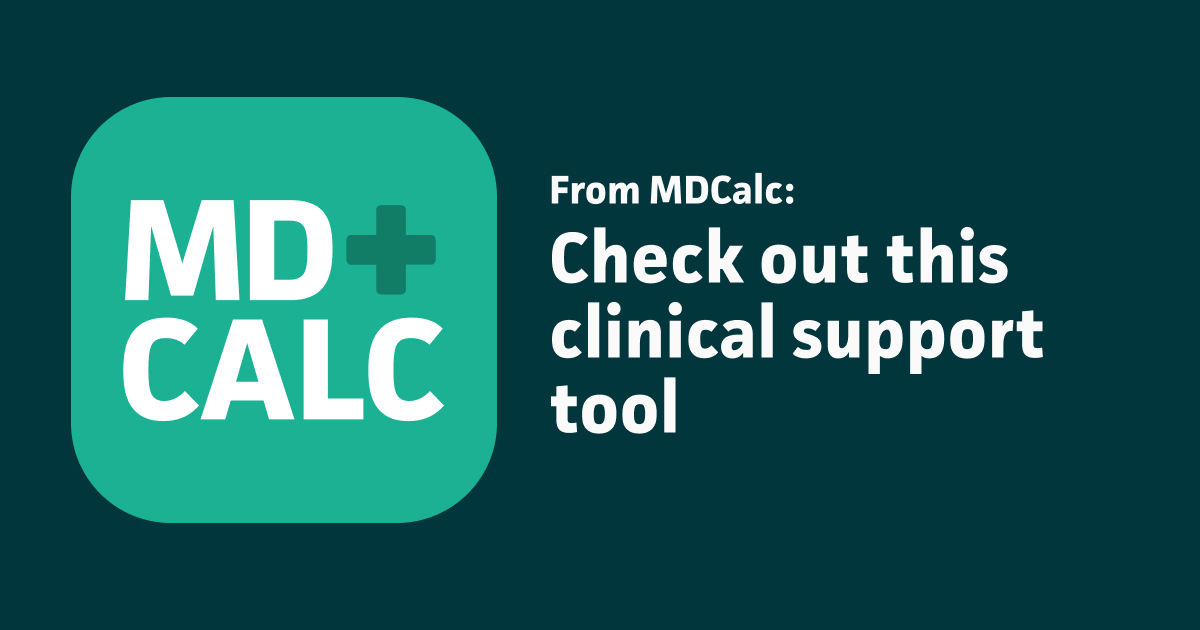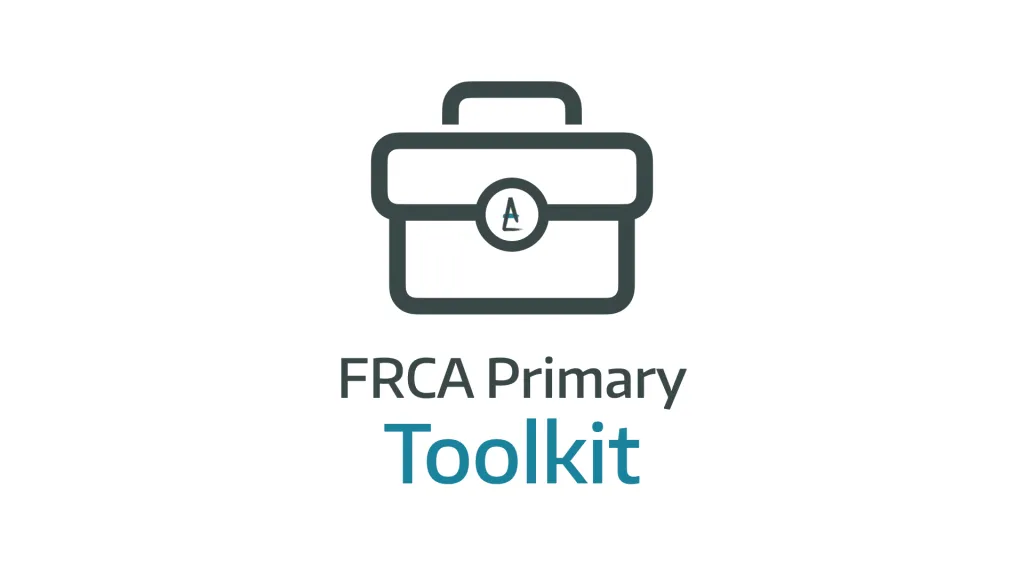Heart failure

Take home messages
- Know what type of heart failure you're treating and why
- Treat the cause as well
- Around half of patients with heart failure have preserved ejection fraction
Heart failure is a modern problem
While not quite as modern as WiFi or the stress of choosing which non-dairy milk to have in your £5.50 flat white, in the grand scheme of things heart failure as a clinical concept has only joined the party relatively recently.
Our ancestors evolved to survive bleeding and starvation, and usually didn't live long enough to have to figure out what to do when your heart starts running out of telomeres.
As a result, the survival machinery in the brain has only really got one trick up its sleeve.
It's a big red button labelled panic, and it does two things:
- Forces the heart to pump harder
- Tells the kidneys to retain a load of fluid and salt
If you're dehydrated and trying to out run a bear, this makes perfect survival sense. You get more cardiac output, more oxygen delivery to brain, heart and muscles, and hopefully substantially less eaten.
Likewise, if said bear has already had some degree of success and you're actively bleeding, it makes even more sense to vasoconstrict like mad and retain as much fluid as kidney-ly possible, because the heart is not the limiting factor here.
The problem until recent years has pretty much universally been hypovolaemia, either through lack of fluid input, or excessive trans-venous output, so you only really needed a very simple evolutionary algorithm:
- If brain not receiving enough oxygen or arteries to brain not receiving enough pressure then
- Activate sympathetic nervous system and renin-angiotensin-aldosterone system and hypothalamus (to release anti-diuretic hormone)
Simple enough, the net result being the heart now has more fluid to pump around the body, and thanks to Frank and Starling's patented stretchy-squeezy technology, a fuller heart is a pumpier heart.
More pumpy - more pressure - more oxygen - less bear.
Until the heart becomes the limiting factor, in which case this survival mechanism makes everything a whole lot worse.
So what do we do when the heart can't bear it any more?
Sorry.
What is heart failure?
The simple definition is the heart cannot pump fluid forward effectively enough to meet the demands of the vital organs, and it can occur for myriad reasons that all boil down to 'not enough squeezy'.
The technical definition
A clinical syndrome with current or prior:
- Symptoms, signs or both caused by a structural or functional cardiac abnormality
Corroborated by at least one of:
- Increased natriuretic peptide concentrations
- Objective evidence of cardiogenic pulmonary or systemic congestion through imaging or haemodynamic measurement at rest or during exercise
We prefer 'not enough squeezy'.
So what happens next?
- The heart fails to pump the fluid it is given forward
- If there aren't any valves, then fluid backs up (pulmonary oedema)
- If there are valves, then the chamber starts to distend (ventricle)
- Pressure in the aorta and carotids drops
- Oxygen supply to the brain drops
- The brain smashes the panic button
- Sympathetic tone increases, fluid and salt are retained
- The heart is then overloaded with more fluid that it can't handle
- The oxygen demand of the myocytes also increases
- The arterioles constrict to increase the blood pressure and divert blood to the head
- The heart is now pumping harder and faster against more resistance, with less time in diastole to supply itself with oxygen
Hello spiral of doom.
What are the different types of heart failure?
Depends on how you want to define it:
- Left vs right - depending on which side of the heart is most affected
- Acute vs chronic - depending on the time course of the disease progression
- Systolic vs diastolic - is the problem the filling or the squeezing?
- High vs low output - is the cardiac output too low, or the metabolic demand too high?
Left vs right
Working on the simple premise that if the heart isn't working properly, fluid is going to back up behind it, you can use clinical symptoms to figure out which side of the heart is the main problem.
- Normalish systolic blood pressure, lungs clear, swollen ankles - right heart
- Slim ankles, crackly chest and short of breath - left heart
- Crackly chest, can't lie flat, swollen ankles, big JVP - both
Both often happens after a protracted period of left heart failure, as the right starts to fail as well.
As always this is an oversimplification and there of course are textbook-loads of nuance involved.
Acute vs chronic
This is a very simple classification:
- Have they crashed through the door in shock and pulmonary oedema after taking a bunch of funny drugs at a festival?
- Or have they had fifteen years of cardiology clinic letters with a gradual progressive drop in their exercise tolerance?
This classification of course tells you nothing of the pathophysiology of which side of the heart is the main issue or during what phase of the cycle, but it gives you an idea of the urgency with which it requires managing.
Systolic
The heart muscle isn't pushing hard enough, and the fluid isn't flowing forward properly.
- The ventricle is floppy and often dilated
- There is a reduced ejection fraction
- Fluid backs up behind the ventricle causing the tell tale symptoms signs and symptoms
Causes:
- Ischaemia
- Cardiomyopathy
- Myocarditis
Diastolic
The ventricle is reasonably capable of squeezing pretty hard, enough to empty the fluid contained within it, but like most type A workaholic anaesthetists it's not very good at relaxing.
- The ventricle doesn't relax properly, or quickly enough
- It doesn't fill as well
- Less volume available to eject during systole
- Lower cardiac output
The ejection fraction may still be high, but a high fraction of a lower volume is still a lower cardiac output.
This is where the ridiculous HEFF PEFF thing comes from - heart failure with preserved ejection fraction - it just means the squeezy phase isn't the main issue, it's the filly phase.
Causes:
- Age
- Hypertension
- Diabetes
- Atrial fibrillation
Atrial fibrillation is key here because a stiff ventricle relies heavily on the atrial kick to squeeze as much fluid into it before it squirts it into the aorta.
Seemingly robust patients can decompensate rapidly if they flip into AF on the table.
High vs Low
- Low means the metabolic demand of the patient's body is fairly normal, the heart just isn't pumping effectively enough to meet it
- High means the heart is pumping fine, maybe even better than normal, but the demand is so high it's still not enough
Think thyrotoxicosis, severe sepsis, anaemia, AV fistuale
So what do I do about it?
Well you can focus on the pathophysiology and the nuance and what guidelines recommend for each very specific variation of this complex condition, or you can think anaesthetically:
'What parameters can I improve to break this spiral of doom?'
As a general rule an acutely failing heart wants five things:
- To be supplied with enough fluid to work with, but not too much
- To be given enough time to fill the ventricles up
- To be given a bit of atrial kick to add a bit more ventricular filling
- To not have to push too hard
- To have enough fuel and oxygen to do the job
And so here you come in, Dr Anaesthetist, with your various tools, tubes and tropes to try and improve the situation.
Treat the cause
This might not be the first thing you do, or an immediate fix, but it often gets forgotten, hence we've written it first.
- If the heart is failing because they were previously dependent on their atrial kick,
- and their low potassium from vomiting due to bowel obstruction has just flipped them into atrial fibrillation
- Then giving some potassium might solve a lot of your (and their) problems
Don't forget magnesium, for no reason other than you like magnesium because you're an anaesthetist and magnesium is amazing.
Other causes to think about:
- Sepsis
- Hypoxia from respiratory pathology
- Electrolyte disturbance
- Thyroid and other endocrine issues
Oxygen and ventilation
Oxygen is frequently helpful for improving myocardial oxygen delivery, however avoid overoxygenating a patient that doesn't need it, as you'll just induce coronary vasoconstriction.
- 92 - 94% saturations is fine
What's more interesting is whether pressure helps.
CPAP
- Pulmonary oedema will be improved by increased intrathoracic pressure
- Increased intrathoracic pressure will reduce the pressure gradient between the inside of the ventricle and the outside of the heart
- This reduces the myocardial workload for the left ventricle
- The right ventricle however won't be so pleased, as the intrathoracic pressure will squeeze the pulmonary vasculature and increase the after load on the right heart
- CPAP will also help with alveolar recruitment and oxygenation
BiPAP
- All the benefits of CPAP plus help with work of breathing
IPPV
- All the benefits of BIPAP plus more control over the pattern of ventilation
- All the added risks and cardiovascular silliness of having to give an anaesthetic to a bad heart
The main downside is that intrathoracic pressure will compress the IVC and SVC and reduce venous return, so pressure needs to be used with caution.
Furosemide
- Rapid capacitance vessel venodilation reduces preload and unloads the heart
- Diuresis reduces the unhelpful fluid and salt retention from the medulla smashing its big red button
Vasodilators
Emergency beetroot.
- Stuff with nitrates in it will cause rapid and profound arterial and venous dilatation
- This dramatically reduces afterload and preload
- It also dramatically reduces systolic pressure and thus cerebral perfusion pressure
- It also generates a reflex tachycardia which might cause as many problems as it solves
A headache for everyone involved.
Inotropes
- Encourage the myocyte to work harder
- More squeezy means more oxygen delivery
- More oxygen delivery to heart means happier myocyte
- Hopefully the myocyte is more happy about the extra oxygen than it is unhappy about the extra speedy squeezy
Inopressors (adrenaline)
- Stronger contraction and more resistance
- Better immediate blood supply to brain
- Much harder work for heart
Inodilators (dobutamine)
- Stronger contraction but less resistance
- Lower blood pressure but better forward flow
- Better for heart but might not be enough for brain
Often a combination of both is needed (noradrenaline and dobutamine) to please both organs as much as possible.
Pulmonary vasodilators
Milrinone and levosimendan
- Same idea as vasodilators but for the right heart
- Reduce the pulmonary vascular resistance
- Increase contractility of the right heart
Can absolutely tank your systolic pressures, so use with caution.
Spironolactone
- A variety of effects including a mild potassium sparing diuresis
- Prevents pathological remodelling of the heart
- More of a chronic therapy
- Should be offered once renal function and hyperkalaemia improve
ACE inhibitors
- Reduce afterload
- Reduce preload
- Reduce remodelling
- Reduce sympathetic activity
- Again more of a chronic therapy that should only be started once renal function and blood pressure stable
Electricity
Ah the age-old 'if drugs don't work let's try some lightning' approach.
- Cardiac resynchronisation therapy is a special form of pacing
- By triggering the right and left heart to contract at the same time, the efficiency of the heart as a whole improves
Aortic balloon pumps
This is getting silly now.
- Wouldn't it be cool if the systemic vascular resistance could be really low when the heart is trying to squeeze
- But then higher when the heart is relaxing so the coronaries get some decent flow?
- Well let's shove an enormous helium filled balloon in the most important blood vessel and rapidly inflate and deflate it with every heartbeat
- Inflate at the beginning of diastole to shove blood back into the coronaries
- Deflate at the beginning of systole to reduce resistance and effectively suck blood out of the ventricle
A nice idea.
Very much a temporary solution as a bridging therapy to either help the heart recover or to buy time until a definitive treatment becomes available.
Haemofiltration
Ah we're running out of ideas now aren't we.
- If not responding to pharmacological diuresis, then mechanical diuresis may be considered
- Use if fluid overload is the main issue and you're convinced they can tolerate the haemodynamic challenge of going onto the filter
More commonly used in patients who have end stage renal failure and a then bit of heart failure on top, where fixing the fluid overload for the kidneys will then make the heart calm down.
ECMO
The control freak's dream - just let me do it for you.
- Entirely replaces the function of the lungs and heart
- Buys time either for heart to recover or a definitive procedure to be done
- Brings its own host of thrombotic and infective complications with it
Ventricular assist devices may offer a slightly more permanent mechanical solution, but are beyond the scope of this post.
How do I know if it's working?
- The patient looks, sounds and feels better
- Capillary refill improves, they might even have a sats trace now
- Lactate improves
- Urine output improves
- Blood pressure might improve, or they might have better cardiac output at a lower pressure (e.g. dobutamine)
- Oxygen requirement reduces
- Echo improves
- ECG may improve if the problem is acute ischaemia
- BNP may improve over time (chronic management, not ED management)
When do I intubate?
When the boss says so - intubating heart failure is never comfortable.
While as a junior anaesthetist you can often confidently make the relatively uncontentious decision to intubate a head trauma patient who is already unconscious, it's somewhat harder to know when the risks of induction and positive pressure ventilation outweigh the benefits in fragile cardiac patients.
Here's what's going to happen.
- The patient is going to deteriorate, with increasing oxygen requirement, climbing CO2 and dropping blood pressure
- You're going to give them drugs that reduce contractility, afterload and remove the sympathetic drive that was keeping them going
- You're going to faff about in their airway for at least a few seconds, allowing oxygen levels to drop and CO2 levels to rise even further
- You're going to inflate their lungs with positive pressure ventilation and compress their IVC, SVC and pulmonary artery
- Their cardiac output is going to collapse, along with everything else
- You're going to spend a fair while injecting stuff with a pink label wondering if you made the right choice
The decision is not an easy one, so needs early senior input.
Crucially you need to remember that intubation does not treat heart failure, it simply buys time. If there is no definitive fix or treatment options for the patient, then you've just taken away their autonomy and dignity with no prospect of improvement.
If however it allows you to transfer them safely to a definitive fix (PPCI, transplant, ECMO) that they wouldn't have tolerated while awake, well then aren't you just splendid.
Call for help early.
What on earth is HFpEF?
Not a cardiologist clearing their throat.
This is a specific form of heart failure where, as the name might suggest, the ejection fraction is preserved.
The ventricle is still contracting well, ejecting a decent fraction of the blood inside it, but the problem is that it can't fill up very well, so each stroke volume is rubbish.
- Remember kids, 65% of nothin is still nothin
Compare this to bog-standard HFrEF, where the left ventricle undergoes a load of remodelling that leads to dilatation and fluid overload.
We used to think (apparently) that HFpEF was due to a heart struggling to keep up with worsening hypertension, becoming stronger and stiffer, and developing diastolic dysfunction over time.
However we now think (apparently) it's more to do with chronic inflammation as a result of obesity, diabetes, CKD and COPD etc that cause microvascular endothelial inflammation in the heart, leading to fibrosis and hypertrophy.
Either way, you still want to treat the hypertension.
What's on the differential for HFpEF?
- Hypertrophic cardiomyopathy
- Amyloid cardiomyopathy
- Pulmonary hypertension
- Constrictive pericarditis
- Coronary artery disease
Here's a calculator for you to enjoy

How do I anaesthetise a patient with heart failure for non-cardiac surgery?
Pre-op
- Optimise where possible
- Establish severity - NYHA/BNP/Echo/recent decompensations
- Assess functional status and exercise tolerance
- Continue beta-blockers, ACEi, spironolactone but hold ACEi on the morning of surgery
- Optimise volume status, avoid hypo/hypervolaemia
Intra-op
- Lots of monitoring - AoA standard plus invasive blood pressure
- Low threshold for central line and inotropes/vasopressors
- Loco-regional anaesthetic techniques where possible, but caution with big drops in SVR with spinal anaesthesia - epidural might better
- General anaesthesia - cardiostable induction, high opioid, lower hypnotic
- Avoid hypoxia
- Avoid hypotension - goal directed fluid therapy
- Avoid anaemia
- Avoid acidosis
- Avoid big swings in preload and afterload
- Maintain sinus rhythm
- Avoid tachycardia
Post-op
- HDU/ICU
- Multimodal analgesia to avoid hypoventilation
- Early mobilisation
- Careful fluid monitoring
- Continue heart failure medications
Useful Tweets and Resources
🚨pulse oximetry is strongly dependent on respiration (sync’ed to the respiratory rate, not the QRS complexes!)
— 𝙟𝙤𝙨𝙝 𝙛𝙖𝙧𝙠𝙖𝙨 💊 (@PulmCrit) June 28, 2023
reveals profound heart failure
perfusion is largely driven passively by intrathoracic pressure swings (similiar to CPR)
w/o major intervention, death is imminent🚨 pic.twitter.com/2QViIDakTF
1/18
— Tony Breu (@tony_breu) November 5, 2022
🤔Why does heart failure with preserved ejection fraction (HFpEF) lead to sodium retention?
With reduced ejection fraction (HFrEF), decreased cardiac output (CO) leads to neurohormonal activation and sodium avidity.
If CO is preserved in HFpEF, what's the inciting event? pic.twitter.com/zQNSlFSszn
References and Further Reading



Primary FRCA Toolkit
While this subject is largely the remit of the Final FRCA examination, up to 20% of the exam can cover Primary material, so don't get caught out!
Members receive 60% discount off the FRCA Primary Toolkit. If you have previously purchased a toolkit at full price, please email anaestheasier@gmail.com for a retrospective discount.

Discount is applied as 6 months free membership - please don't hesitate to email Anaestheasier@gmail.com if you have any questions!
Just a quick reminder that all information posted on Anaestheasier.com is for educational purposes only, and it does not constitute medical or clinical advice.
Anaestheasier® is a registered trademark.

